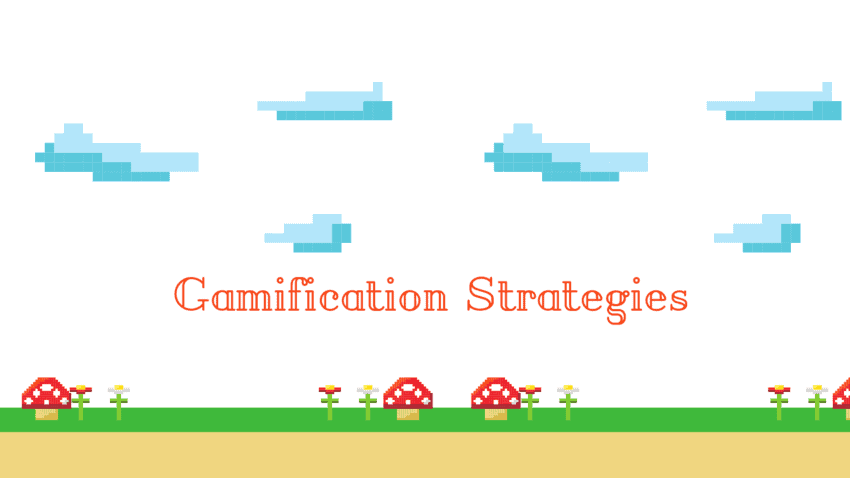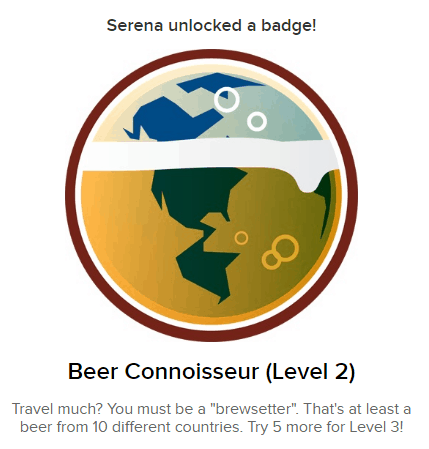Gamification Strategies: Badges in B2B Marketing

Gamification can be daunting. Fully embracing gamification strategies means you’re going to be spending time, money, and a whole lot of effort on something that might not entice your user base. But done correctly, you’ve created a powerful engagement tool that will continue working for you in a way that other B2B marketing campaigns cannot compete with.
Good gamification should fulfill our fundamental needs for autonomy, competence, and relatability. Humans are motivated toward action based on a personal need to prove themselves and share with others. The same satisfaction we’re aiming for in gamification can be derived from checking something off a to-do list and posting about it on Facebook. We want users to associate that type of satisfaction with an application or website.
So should you start designing your game right now? If you’ve never employed gamification strategies before, hold on a moment and reconsider. The first thing you need to ask yourself is “Is this right for my brand and my users?” The answer won’t always be “yes,” and that’s okay. Sometimes it’s better to avoid a trend than shoehorn it into your marketing plan.
But, if you do answer “yes,” the steps you take toward determining your gamification strategy need to reflect your brand and the interaction you want to have with your customers.
What I want you to do is think small. Gamification does not have to be a monstrous undertaking. Before you start on a large-scale plan, consider making small additions to your current marketing campaigns that include key elements of gamification. Get an understanding of your audience’s willingness to interact before you launch a full-scale campaign.
That’s why I want to discuss one of the simplest aspects of gamification strategies that a marketing team can implement: Badges. Gamification badges are a way to reward users for taking actions that you want them to take. A good badge should be visually appealing, clearly defined, and have intrinsic value.
But, wait. We’re using badges because they’re easy and low-cost. How do you give something value if you’re not attaching a monetary amount? When you have great design and a succinct badge definition, the value is the badge itself.
One of my favorite apps does this tremendously well: Untappd is a social tool for the beer-drinking community that allows users to rate beers, check-in beers, comment on friends’ check-ins, and toast (i.e., like) each other’s check-ins. It also gives out badges that serve no purpose, but they’re successful despite this.
On Untappd, users understand what they are receiving the badges for, and they know exactly how they can get the badges they want it. There is a well-defined trophy page listing every badge a user a can receive. The badges are professionally designed and appealing. This makes someone more likely to screenshot it and send it to a friend for bragging rights.
Users are notified as soon as they have completed a badge action. The text beneath the badge encourages them to drink more beer so they can level up the badge they just received.
This is important because while a successful badge system will entertain people, an engaging badge system will have users log in more often than they would have otherwise just to get badges.
I can vouch that Untappd’s badge system encouraged me to drink a beer on my birthday and check it in, just for the “Birthday Brew” badge.
With badges, you can build upon already-existing marketing campaigns within a B2B sphere. If you have an application you are encouraging your customers to use, reward them for learning about the application. When you feel that they are proficient enough in your tool, that’s when you reward them with a badge.
But don’t reward users for things they can cheat on. Visiting five pages of your website? They can zip through those pages without reading a word. In other words, they haven’t really interacted with your brand. Think about every single action you want to reward and how it benefits your marketing initiatives.
Here are a few actions that you might consider rewarding within a gamification badge:
- Learning: A user watches a tutorial video
- Overachieving: A user completes a dated task earlier than necessary
- Utilizing: A user exports a file or report from your application
- Inviting: A user adds or invites new users
- Sharing: A user shares something about your brand on social media
One of the benefits of employing badges is that you can tie badges to automated messages that already exist within your system or website. At the same time, taking risks and getting creative with the badges you enable can establish a better user experience. This increases that intrinsic value your badges should have.
When creating your badge system, the organizational structure needs to be obvious. Certain badges should come before others. Create each badge for a reason. They should also to be distinct from one another so users don’t feel cheated on the gameplay experience.
Once you’ve tested out your campaign, you might decide it’s worth offering physical rewards for achieving multiple badges. This way you can keep your cost down and increase the overall value of badges, rather than the value certain badges have. Alternatively, Untappd does a good job of offering promo codes when users check-in beers during a certain date range or at a specific bar. They are not attached to badges, but they appear as automated messages after an action in the same way badges do. You can use this idea, too, for rewarding specialized actions users might take as between-the-badges goodies.
Lastly, if you decide to implement a badge system in your application, allow users to disable it. This creates a solid number of users actually interested in your gamification strategies. Point to this when analyzing your campaign.
Successful gamification should do two things: Motivate users to interact with your brand and create a conversation. Come to think of it, isn’t that what every successful marketing campaign should do?
So before you plunge into the deep waters of gamification strategies, take a splash in the kiddy pool with some simple badges.
If you’re not quite ready to start with gamification and need to talk to someone first, contact DemandZEN. We would love to discuss your marketing goals and help you to determine if gamification is the right step for your business. DemandZEN specializes in online marketing strategy for B2B companies, lead generation, PPC, and Search-Engine-Marketing.
You Might Also Enjoy These Posts
Demand Generation vs Lead Generation
How to Create an Exceptional Client Experience
Welcome To DemandZEN
DemandZEN specializes in Account-Based Demand Generation and solving the challenges around finding, engaging and converting target accounts into real opportunities for B2B Technology and Services companies.



